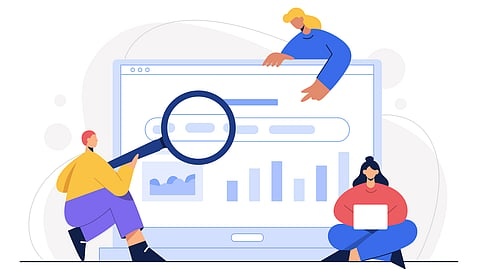Core Web Vitals: What Is It And Why Is It Important For Digital Publishers?
Written by : Rashmi Singh
Google makes waves across the internet every time it pushes a major algorithm update. While minor updates can be ignored, every website that gets traffic from the tech giant should focus on major updates. And according to SEO industry experts, Core Web Vitals can turn out to be one of the most important algorithms of the past few years.
In this guide, we have explained the basics of Core Web Vitals and its importance for digital publishers. Read on.
What are Core Web Vitals?
Core Web Vitals are metrics set by Google that help website owners and developers understand the user experience (UX) of web pages. Initially, Core Web Vitals were released only for developers but since these metrics can be used by anyone to make the UX better, Google decided to release them for all site owners.
There are three areas of UX that are measured by Core Web Vitals:
The performance of page loading
How easily can a user interact with a web page
The visual stability of a web page from a user’s POV
It’s important to notice here that these three metrics do not make up the whole user experience of a web page or a website. These metrics just help developers to break down UX into measurable variables that can be improved one by one.
The Three Variables
The three variables we just mentioned above are explained in a beginner-friendly manner. Google has officially given them the following technical names that are more technical:
Largest Contentful Paint
First Input Delay
Cumulative Layout Shift
Let’s know more about these metrics one at a time.
Largest Contentful Paint
Largest Content Paint or LCP is the time taken by a page to load the majority of the content. Most other page load metrics such as TTFB and First Contextual Paint also measure the page load time, but what makes LCP different from other metrics is that it is seen from a user’s point of view instead of a crawler bot’s perspective.
According to Google, 2 Seconds LCP is good while anything more than that means that the page needs improvement.
First Input Delay
First Input Delay or FID is the time taken by a page to respond to the user’s engagement. For example, if a user clicks on a link on the page, FID will measure the time it took for the new page to open. According to Google, 100 MS FID is good while anything more than that means that the page needs improvement.
Cumulative Layout Shift
Cumulative Layout Shift or CLS measures the visual stability of a web page. It is the time taken by a web page to settle its major elements that are moving around while the page fully loads. The higher the CLS, the less stable the layout of the page. According to Google, a CLS that is less than 2.5 sec is considered good.
The Importance of Core Web Vitals
By now, most digital publishers understand that publishing high-quality content regularly is the key to ranking better on Google. So, sometimes, Google faces scenarios in which the quality of the content of two pages is similar. Core Web Vitals become useful in those cases as the search engine favors those pages that provide good UX along with quality content.
Having a robust CMS is crucial to create pages that not only have authentic content but also provide a good user experience. At Quintype, we have built a smart headless CMS called the Bold CMS. It comes with prebuilt features that help you validate on-page SEO with automatic recommendations.

